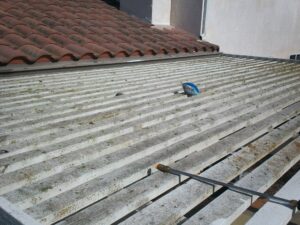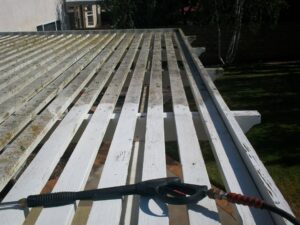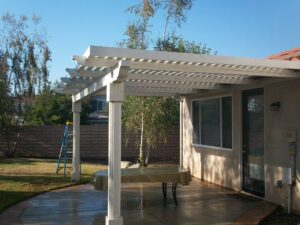Pressure Washing Highlights
Our client called us with a simple issue: his patio was dirty. We came out on the last day of the month. It only took us a couple hours to pressure wash the patio, as well as some areas in the front of his house. When we were done, every area looked shiny and new.
The difference between a good and bad pressure washing job on a patio lies in technique, attention to detail, and respect for the surface material. A good job begins with proper surface preparation—clearing debris, applying detergent if needed, and selecting the right nozzle and pressure setting for the material, whether it’s concrete, pavers, or stone. The operator moves methodically, overlapping each pass to avoid streaks and ensuring even cleaning without etching or damaging the surface. Edges and corners are treated with care, and runoff is managed to prevent pooling or erosion. In contrast, a bad job often shows uneven results, missed spots, and visible lines from inconsistent pressure or rushed work. Worse, using excessive force or the wrong equipment can scar the surface, loosen grout, or drive water into cracks, leading to long-term damage. Ultimately, a well-executed pressure wash leaves the patio looking refreshed and preserved, while a poor one can do more harm than good.
When pressure washing a patio cover, the difference between a good and bad job hinges on precision, surface awareness, and cleanup. A good job starts with assessing the material—whether it’s aluminum, wood, vinyl, or composite—and adjusting the pressure accordingly to avoid damage. The technician uses controlled strokes, working from top to bottom to prevent streaking and ensure that dirt and mildew are fully removed without forcing water into seams or joints. Special attention is paid to gutters, support beams, and hard-to-reach crevices, leaving the entire structure uniformly clean and free of residue. In contrast, a bad job often involves blasting with excessive pressure, which can strip paint, warp panels, or leave behind uneven patches and water intrusion. Overspray may coat nearby windows or furniture, and poor technique can result in missed spots or lingering grime. A well-done pressure wash enhances the patio cover’s appearance and longevity, while a careless one risks costly repairs and a less-than-polished finish.


